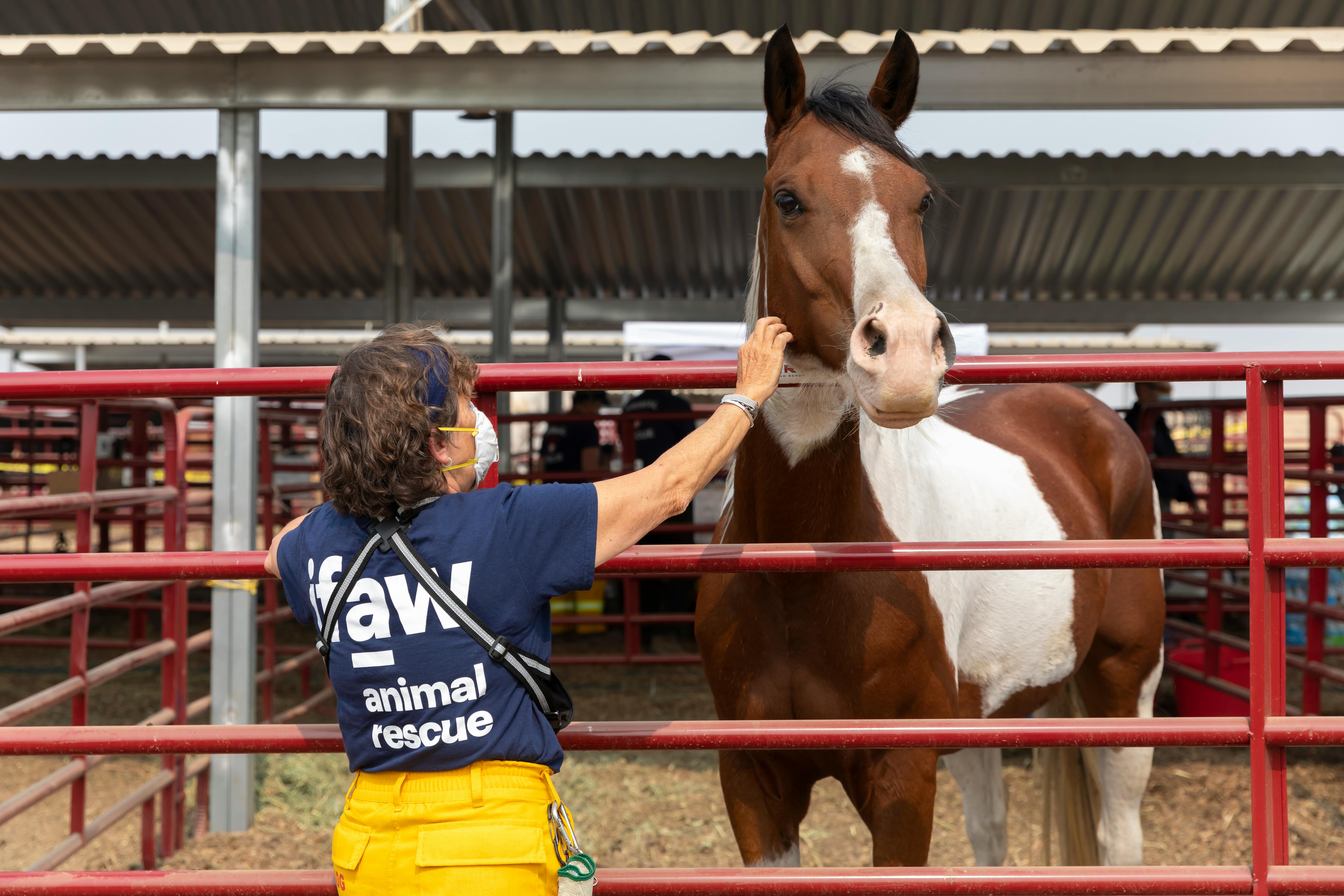
How to start beekeeping for free
Beekeeping has suddenly become popular again, having been in decline for more than half a century.
Bees have been in the news for all the wrong reasons – collapsed colonies, pesticide poisoning, and parasitic mites – and all of this bad news seems to have triggered an almost primitive desire in people to want to help and nurture this vitally important insect that Despite all our scientific advances, we still do not fully understand them, but we know that we cannot live without them.
For as long as I can remember, the media has regarded beekeepers as harmless and careless old men (mostly), doing arcane things with strange wooden bee boxes, while dressed in suspiciously suspicious garb. However, this picture is beginning to change, with more and more women and young people drawn to the idea of learning this ancient craft and a new urgency in the air about the preservation of our bees for their important role as pollinators, as well as for their own good.
When people first consider raising bees, their first port of call will most likely be the local Beekeepers Association. Here you will almost always find a friendly welcome and a host of technical talks between the ‘veterans’, most of which will sound like a foreign language at first. When the jargon is translated, it turns out that one will have to part with a not inconsiderable sum of money to buy the ticket to this arcane world: shiny catalogs full of shiny equipment are seductive, but the price lists that accompany them can come as a big shock.
Many have shelved the idea at this time.
But it does not have to be like that. It is perfectly possible to become a beekeeper, even a good beekeeper, without spending a good chunk of your hard-earned savings. In fact, as I’ll show you, you can even do it virtually for free!
The next hurdle the aspiring beekeeper must face is the heavy weights one is expected to lift and carry. With conventional equipment, you should be able to lift at least 50 pounds (roughly 25 kilos) of deadlift from ground level, something you should not attempt if you have a slight build and are not used to changing boxes in that class.
Again, this doesn’t have to be the case – I’ll show you how the least fit person can become a beekeeper. In fact, using my system, you could even work in a hive from a wheelchair.
Another hurdle that can dampen newbie enthusiasm is storage space. With conventional hives, you can’t help but rack up all sorts of ‘extras’ – oddly shaped boxes, frames, roofs, extractors – all sorts of things the ‘veterans’ forgot to mention at that exciting first gathering, and you’ll need space to store it. We’re talking about a garage space, folks. Once again I have good news: follow my system and you won’t need any additional storage space as everything can be stored inside the hives themselves.
So what does it really take to become a beekeeper?
The essentials are quite simple: a kind of beehive, a hat and a veil, an old white shirt and, to begin with at least, some gloves, and the agreement of the people who share your living space. It doesn’t matter if you are a city or country dweller, as long as there is an abundant and varied supply of flowering plants from early spring onwards. In fact, bees often do better in well-landscaped urban areas than in the “green desert” of modern industrial farmland.
Like many beekeeping newbies, I started with a conventional framed hive, the kind that have slanted-sided outer boxes that are familiar from children’s books. Soon, I acquired a couple more and began to realize that if I continued down this path, I would have to build myself a large shed to house all the spare carpentry and other paraphernalia that was rapidly accumulating, and I would have. to find a way to pay for all the ‘extras’ you would soon need.
At this point I asked myself: does it really have to be this way? – and that innocent question led me on an exploratory mission of reading, study and experimentation that showed me conclusively that, no, it doesn’t have to be this way: beekeeping doesn’t have to be complicated, expensive or dependent on pieces made to order. machine. And equipment.
My search for an alternative approach led me to the top bar hive, one of the oldest and simplest hive types, requiring little skill and few tools to build. A good start on the road to sustainable simplicity, but is it a practical hive for modern beekeeping?
After a few years of experimenting and testing various designs, I believe I now have a top bar hive design that is easy to build, practical and productive while being comfortable and easy to use for both the bees and the beekeeper. .
So what are top bar hives?
The principle is simple: a box with sticks on top, to which the bees place their honeycomb. Mine have central side entrances, slanted sides, and a couple of ‘follower boards’ to enclose the colony. There are many variations on this theme and all have the essential guiding principle of simplicity of construction and management. There are no frames, no queen excluders, no ekes, no mouse protectors, no risers, no foundations and there is no need for extractors, settling tanks, filters, stripping knives … in fact there is no need for any other equipment or storage space, other than that provided within the hive itself. And if you’ve just spent an hour flipping through vendor catalogs, wondering how you can afford to have bees, it will be a relief!
Building a top bar hive is no more difficult than shelving and can be done with hand tools and recycled wood. Top bar beekeeping really is ‘beekeeping for everyone’ including people with disabilities, back problems or a reluctance to lift boxes – there is nothing heavy once the hives are in place as the honey is harvested from a honeycomb at once. From a bees point of view, top bar hives offer a weather resistant shelter, the opportunity to build a honeycomb to your own design, without the limitations of the artificial wax base, and minimal alteration, thanks to a “ leave alone ” management style. .
So where do you get bees from?
You can buy them or catch them, or if you’re lucky, they will adopt you! Catching or luring a swarm is by far the most fun and much easier than you might think. Bees swarm in response to their breeding instinct, mainly in spring and early summer, and the sight of a swarm in flight is certainly impressive. However, contrary to popular belief, this is the time when you are least likely to get bitten – your only concern at that time is finding a new place to live. So if you offer them the right kind of accommodation at the right time, such as a cozy, pleasant-smelling hive, they are very likely to move in on their own. Many people become beekeepers by luring a passing swarm with a few drops of citronella or lemongrass oil, or better yet, rubbing the inside of the hive with pure beeswax.
Capturing a swarm isn’t difficult either – hold a basket or cardboard box under its soccer-ball-sized cluster on a tree branch and give it a good shake! It is not always as easy as that, but it is rarely as difficult as pulling a cat out of a tree.
If you think you want to have bees, I suggest you first meet a local beekeeper who is willing to let you visit and handle their bees. Most beekeepers associations have ‘meet the bees’ days during the spring, giving newcomers a chance to see inside a hive and test their responses when surrounded by bees.
And bites? Yes, they will sting you from time to time, no matter how careful you are. Local swelling, redness, and itching is a normal reaction – fainting, shortness of breath, and collapse are true allergic symptoms and are life-threatening. Most people who keep bees become less sensitive to stings over time, but sometimes the opposite is true, and an experienced beekeeper can become allergic suddenly on occasion. So if you have any reason to assume that you may be sensitive to bee venom (only one in 200 people is), be sure to bring Benadryl or an Epipen (adrenaline shot) or make sure whoever is with you is properly equipped to deal with an emergency.
Whether you approach it from the point of view of conservation, entomology, crop pollination, or simply a love of honey, beekeeping is an attractive pursuit and a fascinating window into the natural world.
Bees are in trouble right now, due to pesticides, industrial agriculture, pollution, parasitic mites and viruses, and we need all the ‘natural’ beekeepers we can get to increase their numbers and give them a chance to solve their problems. own problems. So if you want to raise bees, build a hive before swarming season, and you could be tasting your own honey at the end of the summer!




No Comment